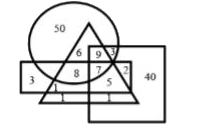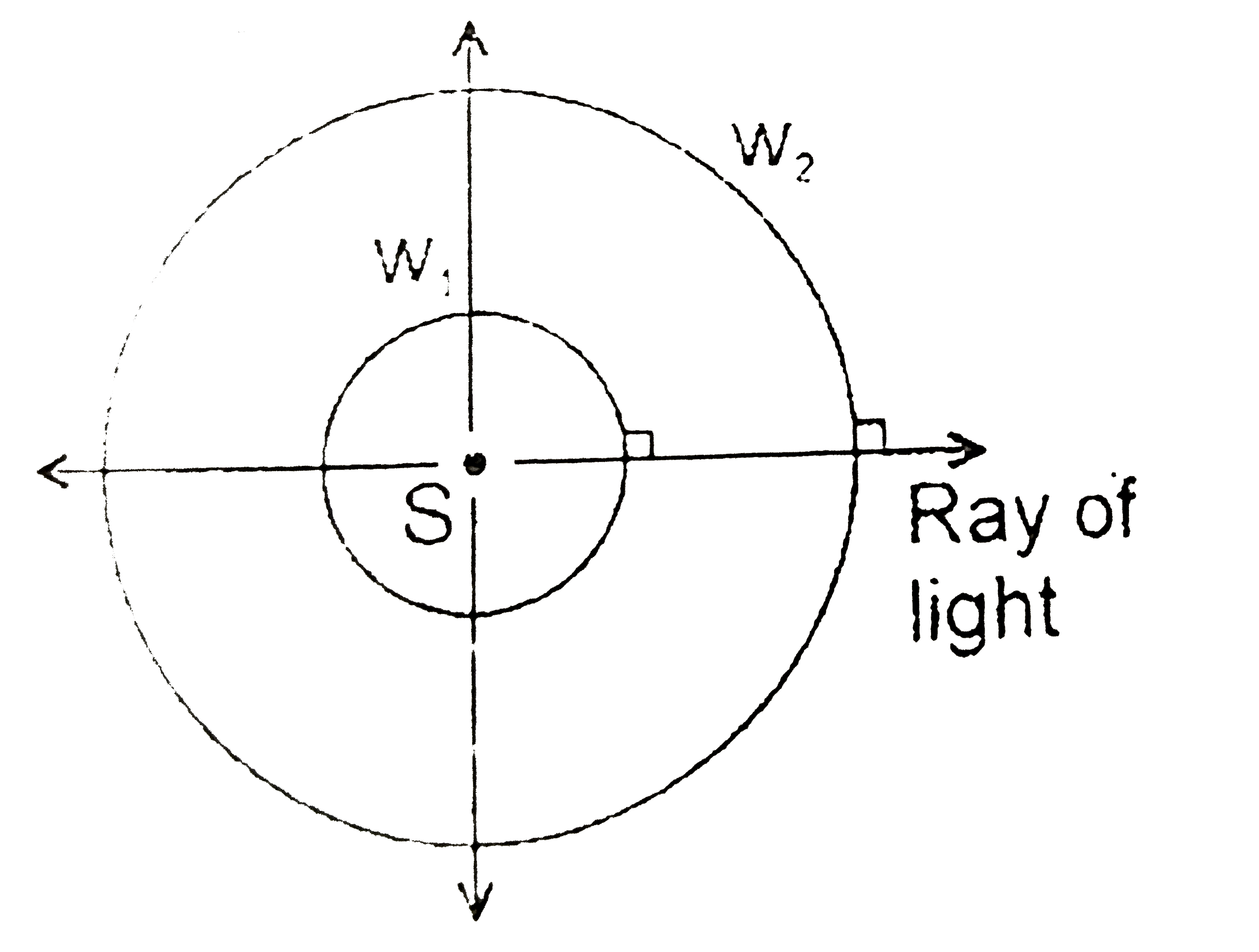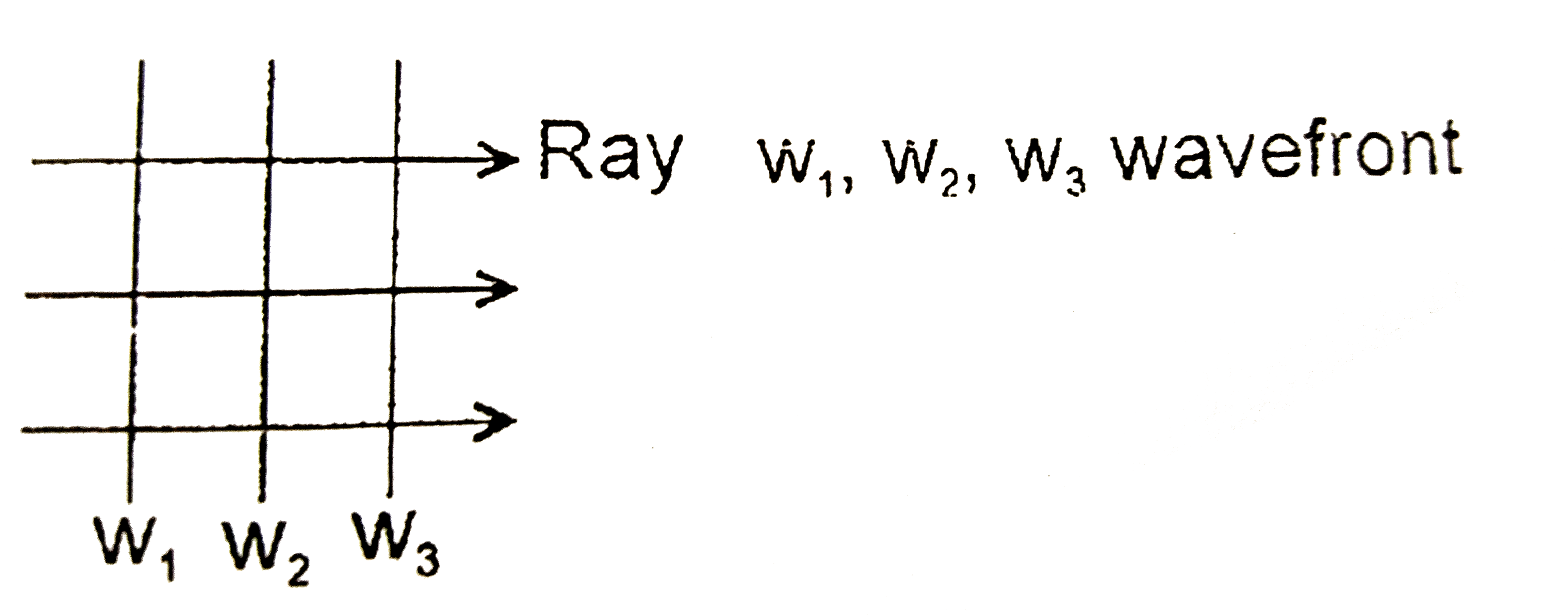Supersonic air planes create a shock wave called/ पराध्वनि विमान .......... नामक एक प्रघाती तरंग पैदा करते हैं।
Transition wave/ संक्रमण तरंग
Ultrasound/ पराश्रव्य तरंग
Transverse wave/ अनुप्रस्थ तरंग
Sonic boom/ ध्वनि बूम
The correct Answer is:D
Step by step video, text & image solution for Supersonic air planes create a shock wave called/ पराध्वनि विमान .......... नामक एक प्रघाती तरंग पैदा करते हैं। by Maths experts to help you in doubts & scoring excellent marks in Class 14 exams.
Similar Questions
In the given Venn diagram, the ‘rectangle’ represents ‘travellers who like to travel by plane’, the ‘circle’ represents ‘travellers who like to travel by bus’ , and the ‘triangle ‘represents travellers who like to travellers who like to travel by train’. The numbers given in the diagram represent the number of travellers in that particular category.
दिए गए वेन आरेख में, आयत'” उन यात्रियों को दर्शाता है जो विमान के द्वारा सफ़र करना पसंद करते हैं | 'वृत्त' उन यात्रियों को दर्शाता है जो “बस' के द्वारा सफ़र करना पसंद करते हैं तथा त्रिभुज” उन यात्रियों को दर्शाता है जो ट्रेन से यात्रा करना पसंद करते हैं | आरेख में दी गयी संख्याएँ उस विशेष श्रेणी के यात्रियों की संख्या को दर्शाती हैं| How many travellers like to travel either by train or plane but NOT by bus?
How many travellers like to travel either by train or plane but NOT by bus?
कितने यात्री ऐसे हैं जो ट्रेन या विमान से सफ़र करना पसंद करते हैं लेकिन बस से नहीं ?View SolutionA prestigious company had called for candidates to be interviewed. Their data has been presented by the given Venn diagram. The circle represents MBA candidates from a reputed institution, the triangle represents candidates with an experience of more than10 years, the rectangle represents industrious candidates and the square represents candidates aged between 40 and 50 years. The numbers given in the diagram represent the number of persons of that particular category. The company has called for the final interview, only those candidates who meet all the above criteria. How many people have been called for the final interview?
 View Solution
View Solution
Knowledge Check
- Question 1 - Select One
Statement-1 : Shock waves produced by supersonic aircraft may be visible
Statement-2 : The sudden decrease in air pressure in the shock waves caused water molecules in the air to condense, forming a fog.AStatement-1 is true, Statement-2 is true , Statement-2 is correct explanation for Statement-13BStatement-1 is true,Statement-2 is true , Statement-2 is NOT a correct explanation for Statement-13CStatement-1 is true, Statement-2 is falseDStatement-1 is false, Statement-2 is true - Question 2 - Select One
निम्नलिखित गद्यांश को पढ़कर पूछे गए प्रश्नों में सबसे उचित विकल्प चुनिए।
क्या आपने कभी महसूस किया है कि किसी सवाल का सही उत्तर मिल जाने के बाद सिर्फ उकताहट के सिवा कुछ बाकी नहीं बचता। इसके बाद सारे रास्ते बंद से लगने लगते हैं। दूसरी ओर एक गलत जवाब उतना ही रोचक होता है जितना कोई रहस्यमय कत्ला मुझे इस बात पर आश्चर्य होता है कि अपने अट्ठाईस वर्षों के अध्यापन के अनुभव से मैंने गलत उत्तरों से कितना कुछ सीखा है। अपनी खुद की और अपने विद्यार्थी के किसी प्रश्न का गलत उत्तर देने पर, मैं उससे सबसे पहले यह पूछता हूँ कि उसने ऐसा उत्तर क्या सोचकर दिया? कला-संकाय के छात्र अक्सर यह शिकायत करते हैं कि विज्ञान-संबंधी परीक्षाएँ उतनी रोमांचक नहीं होती क्योंकि उनके प्रश्नों और उत्तरों का सही-सही अनुमान लगाया जा सकता है। यदि व्यक्ति को किसी प्रश्न को हल करने का तरीका पहले से ही मालूम है तो उसके लिए कोई चुनौती नहीं बचती। यह सही है, भौतिक विज्ञान के शिक्षक बहुत कड़ी मेहनत करते हैं और सुनिश्चित करना चाहते हैं कि उनके विद्यार्थी सही उत्तर तक पहुँच पाएँ। हालाँकि यह भी अपनी जगह सच है कि भौतिक विज्ञान के शिक्षक के लिए सबसे मजेदार स्थिति तब पैदा होती है जब विद्यार्थी एक ऐसा गलत जवाब दे जिसमें गलती होते हुए भी कुछ सोचने के लिए मजबूर कर देने की क्षमता हो। यही वह स्थिति होती है जब भौतिकी के किसी पहलू पर पकड़ बनाने की कोशिश कर रहे विद्यार्थी के दिमाग की कशमकश को समझा जा सकता है। बहुत-से गलत जवाबों की तह में कुछ सही तथ्य और सोचने की शक्ति छुपी होती है। हो सकता है कि उत्तर देने वाला अपना तर्क सही न दे पाया हो, या शिक्षक द्वारा दी गई व्याख्या को सही प्रकार से न समझा गया हो, या फिर ऐसा भी हो सकता है कि जिस रूप में उसके समक्ष तथ्य प्रस्तुत किये गए उन्हीं में कोई कमी रह गई हो। हो सकता है कि भौतिक विज्ञान के सहज नियमों को समझने में ही कोई भूल हुई हो।
अपनी खुद की और अपने विद्यार्थियों .......... वाक्य में रेखांकित सर्वनाम है।Aअनिश्चयवाचक सर्वनामBपुरुषवाचक सर्वनामCसंबंधवाचक सर्वनामDनिजवाचक सर्वनाम - Question 3 - Select One
_E01_074_Q01.png)
Huygen was the figure scientist who proposed the idea of wave theory of light he said that the light propagates in form of wavelengths. A wavefront is a imaginary surface of every point of which waves are in the same. phase.
For example the wavefront for a point source of light is collection of concentric spheres which have centre at the origin w1 is a wavefront w2 is another wavefront.
The radius of the wavefront at time 't' is 'ct' in thic case where 'c' is the speed of light the direction of propagation of light is perpendicular to the surface of the wavelength. the wavefronts are plane wavefronts in case of a parallel beam of light.
_E01_074_Q02.png)
Huygen also said that every point of the wavefront acts as the source of secondary wavelets. The tangent drawn to all secondary wavelets at a time is the new wavefront at that time. The wavelets are to be considered only in the forward direction (i.e., the direction of propagation of light) and not in the reverse direction if a wavefront w1 and draw spheres of radius 'cΔt' they are called secondary wavelets.
Draw a surface w2 which is tangential to all these secondary wavelets w2 is the wavefront at time t+Δt Huygen proved the laws of reflection and laws of refraction using concept of wavefront.
Q. A point source of light is placed at origin, in air. the equation of wavefront of the wave at time t, emitted by source at t=0 is (take refractive index of air as 1)Ax+y+z=ctBx2+y2+z2=t2Cxy+yz+zx=c2t2Dx2+y2+z2=c2t2
An explosion creates a shock wave. Find the initial velocity of the wave front when the air pressure is 200 times the atmospheric pressure, assuming that the front of the shock wave may be regarded as a discontinuity in the density. Take into account that at such pressures γ=1.8.
View SolutionA supersonic jet travels with twice the speed of sound in air. What is the angle of the conical wavefront of the shock wave produced by the jet?
View SolutionThe shock wave off the cockpit of the FA 18 has an angle of about 60∘ . The airplane was traveling at about 1350 km/h when the photograph was taken. Approximately what was the speed of sound at the air plane's altitude?
View SolutionHuygen was the first scientist who proposed the idea of wave theory of light. He said that the light propagates in form of wavefronts. A wavefront is an imaginary surface at every point of which waves are in the same phase. For example the wavefronts for a point source of light is collectionof concentric spheres which have centre at the origin. w1 is a wavefront. w2 is another wavefront.

The redius of the wavefront at time 't' is 'ct' in this case where 'c' is the speed of light. The direction of propagation of light is perpendicular to the surface of the wavefront. The wavefronts are plane wavefronts in case of a parallel beam of light.

Huygen also said that every point of the wavefront acts as the source of secondary wavelets. The tangent drawn to all secondary wavelets at a time is the new wavefront at that time. The wavelets are to be consid-ered only in the forward direction (i.e. the direction of propagation of light) and not in the reverse direction. If a wavefront w1 at time t is given, then to draw the wavefront at time t+Δt0 take some points on the wavefront w1 and draw spheres of radius 'cΔt'. They are called secondary wavelets

Draw a surface w2 which is tangential to all these secondary wavelets. w2 is the wavefront at time 't+Δt'. Huygen proved the laws of reflection and laws of refraction using concept of wavefronts.
A point source of light is placed at origin, in air. The equation of wave front of the wave at time t, emitted by source at t=0, is (take refractive index of air as 1)View Solutionआसमान में मुक्का मारना कोई बुद्धिमानी का काम नहीं समझा जाता | बिना लक्ष्य के तर्क करना भी बुद्धिमानी नहीं है | हमें भली-भाँति समझ लेने करने जा रहे हैं वह किसके लिए है ? साहित्य हम किसके लिए रचते हैं, इतिहास और दर्शन क्यों लिखते और पढ़ते हैं ? राजनीतिक आन्दोलन किस महान उद्देश्य की सिद्धि के लिए करते हैं ? मनुष्य ही वह बड़ी चीज है जिसके लिए सब यह किया करते हैं | हमारे सब प्रयत्नों का एक लक्ष्य है, मनुष्य वर्तमान दुर्गति के पंक से उद्धार पाए और भविष्य में सुख और शान्ति से रह सके | वह शास्त्र, वह ग्रंथ, वह कला, वह नृत्य, वह राजनीति, वह समाज-सुधार जंजाल-मात्र है जिससे मनुष्य का भला न होता हो | मनुष्य आज हाहाकार के भीतर त्राहि-त्राहि पुकार रहा है | हमारे राजनीतिक और सामाजिक सुधार से अन्न-वस्त्र की समस्या सुलझ सकती है फिर भी मनुष्य सुखी नहीं बनेगा | उसे सिर्फ अन्न-वस्त्र से ही संतोष नहीं होगा | इसके बाद भी उसका मनुष्य बनना बाकी रह जाता है | साहित्य वही काम करता है | मनुष्य नामक प्राणी तो पशुओं में ही एक विकसित प्रजाति है और यदि मनुष्यता के गुण और मूल्य उसमें नहीं हैं, तो वह मनुष्य नामक पशु ही है, मनुष्य नहीं | भोजन करना, सोना और वंश-वृद्धि जैसे काम प्रकृति के द्वारा तय है, सच्चा मानव बनने के लिए उसे जो दृष्टि चाहिए उसे पाने में साहित्य सहायक हो सकता है |
मनुष्य एक पशु ही है यदि उसमेंView Solution
